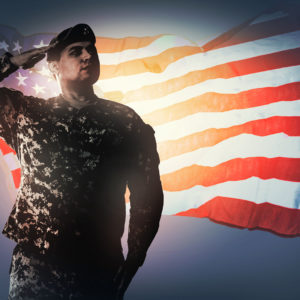Holidays can be especially tough for troops deployed abroad, but they can also be challenging for veterans in need. And this holiday season, we have an important message for those who have worn the uniform: the Department of Veterans Affairs is here to help.
Suicide prevention is VA’s number one clinical priority, but getting more veterans into care is one of our greatest challenges. An average of 20 veterans die by suicide each day. Of those 20, 14 have not received recent VA care.
That’s why we’re working closely with the Departments of Defense and Homeland Security to implement President Trump’s Jan. 9, 2018, executive order to ensure that all new veterans receive mental health care for at least one year following their separation from service.
This critical period is marked by a high risk for suicide, and President Trump’s executive order is helping us ensure that service members learn about VA benefits and start VA health care enrollment before becoming veterans. In July 2018, nearly 8,000 transitioning service members attended VA Transition Assistance Program modules in person, and more than 2,700 registered for VA health care before, during, or after their class attendance date. We are also working to ensure that any newly transitioned veteran can go to a VA medical center or Vet Center and start receiving mental health care right away.
VA’s available resources are extensive. To get the word out, VA spent $12.2 million on suicide prevention outreach in fiscal year 2018, including $1.5 million on paid media. We’ve also made great use of unpaid media through our partnership with Johnson & Johnson to produce a public service announcement featuring Tom Hanks—at no cost to VA. That partnership helped put VA in the top 10 of the Nielson ratings for PSAs. Its YouTube version drew tens of thousands of views.
The Hanks PSA was part of our #BeThere public outreach campaign that attracted over 102,000 visits to its website last year. Last September, Suicide Prevention Month, our #BeThere messaging generated 50 million Twitter impressions and 18 million social media hits, while attracting over 100 public- and private-sector partners.
Our promotional efforts are working, as more and more Americans are taking advantage of our suicide prevention resources.
The Veterans Crisis Line helps about 2,000 callers every day. In the past 10 years, it has answered over 3.5 million calls, engaged in over 413,000 online chats, and responded to over 98,000 text messages.
Most of the callers to the Veterans Crisis Line are veterans, but many are also concerned family members and friends calling on behalf of a veteran close to them. VA is there to help them, too.
Our suicide prevention coordinators conducted over 22,000 outreach events last year, reaching 2.2 million people.
And anyone can take VA’s S.A.V.E. suicide prevention training for free on the PsychArmor Institute website. Over 17,000 Americans already have taken this step. For VA employees, annual S.A.V.E. training is mandatory. In September alone, over 52,000 employees completed it.
But no one organization can tackle suicide prevention on its own. To save veterans’ lives, we must ensure that multiple systems are working in a coordinated way to reach veterans when and where they need assistance.
In other words, VA needs everyone’s help. So if you know a veteran in crisis, point him or her toward the nearest VA facility, where they can get same day urgent mental health services. Have them call the Veteran Crisis Line at call 1-800-273-8255 and Press 1, or even make that call yourself.
Every death by suicide is a tragedy, and we will not relent in our efforts to connect veterans in need with lifesaving support. VA is here to help, and we need everyone’s help in spreading that message.

